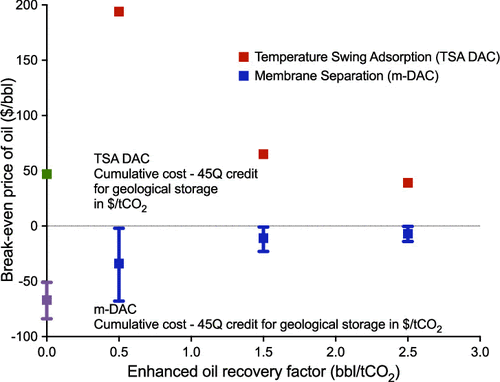Analysis of Direct Air Capture Integrated with Wind Energy and Enhanced Oil Recovery
ayesha iqbal
- Authors
- Aparajita Datta and Ramanan Krishnamoorti
Abstract

Direct air capture (DAC) is a decarbonization solution to remove carbon dioxide (CO2) from the atmosphere. The key challenges for accelerating DAC deployment are its energy requirements, high capital costs, and finding low-risk and low-cost sequestration or utilization pathways. Deploying DAC facilities proximal to sequestration or use sites and where the supply of low-cost renewable electricity is plentiful can minimize the energy, transportation, operational, and overall costs. Moreover, the increased 45Q tax credits in the Inflation Reduction Act of 2022 can further incentivize DAC deployment. This work provides a techno-economic assessment of two configurations: temperature swing adsorption-based DAC and membrane-based DAC integrated for operation with wind energy in West Texas to provide proximal access to enhanced oil recovery (EOR) operations. We evaluate the levelized cost of DAC and the cumulative cost of sequestering a ton of CO2 through EOR to identify opportunities for economic viability. Finally, we determine the profitability of CO2 sequestration under different EOR recovery factors and oil prices. We find that opportunities to reduce costs through proximal sequestration, integration with renewable energy, and the current level of policy support in the US can significantly incentivize and rapidly accelerate the deployment of DAC, especially for membrane-based technologies.
KEYWORDS:
- negative emission technologies,
- decarbonization,
- carbon dioxide removal,
- carbon management, r
- enewable energy
Source: ACS Publications
